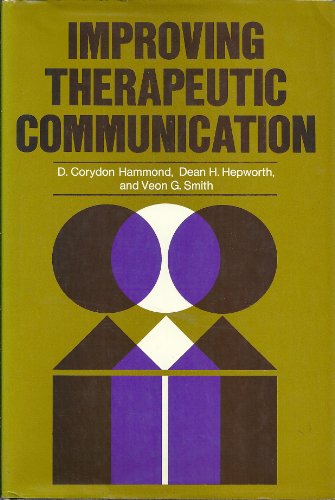Throughout the book, the authors focus on the basic skills that facilitate communications in therapy (empathy, respect, authenticity, relating in the here-and-now, and confrontation) and explore specific methods of using them. These skills--which research shows are crucial to effective therapy--enable therapists and counselors to
* Empathize in a caring way with the feelings of clients
* Become receptive to clients in a warm, respectful, and nonjudgmental way
* Constructively share feelings with clients in a natural, open manner
* Therapeutically utilize moment-to-moment, here-and-now interaction
* Make clients aware of their inconsistencies and discrepancies without arousing antagonism or defensiveness
Improving Therapeutic Communication was first published in 1977 and has become a classic guide for mental health professionals, students, interns, and trainees who want to refine their basic people skills and improve their therapeutic bedside manner. The book includes fundamental principles, practical guidelines and exercises that aim to instill and enhance the fundamental skills needed to respond to clients in a helpful manner. This first paperback edition of the best-selling guide also includes a new foreword by author D. Corydon Hammond.
Throughout the book, the authors focus on the basic skills that facilitate communications in therapy (empathy, respect, authenticity, relating in the here-and-now, and confrontation) and explore specific methods of using them. These skills--which research shows are crucial to effective therapy--enable therapists and counselors to
- Empathize in a caring way with the feelings of clients
- Become receptive to clients in a warm, respectful, and nonjudgmental way
- Constructively share feelings with clients in a natural, open manner
- Therapeutically utilize moment-to-moment, here-and-now interaction
- Make clients aware of their inconsistencies and discrepancies without arousing antagonism or defensiveness
In addition, the book describes specific methods for enhancing these skills and offers a series of highly practical communication skill-building exercises that start on a simple level and become increasingly complex. The book also contains helpful self-assessments of skill development. The authors further demonstrate how to increase sensitivity to clients' feelings, point out counterproductive patterns of communication, and describe relevant research connecting the basic skills with positive therapeutic results.
